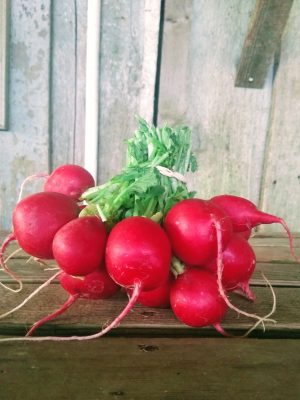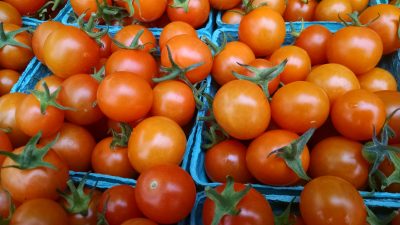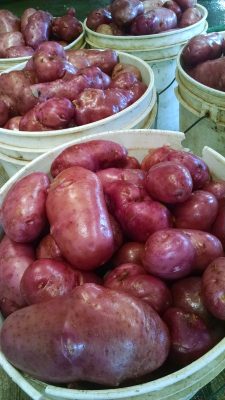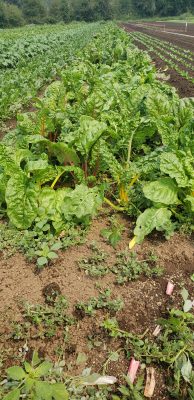
A lot of people at market ask for advice on the best ways to store their veggies at home. People generally know that greens last better in the fridge, but does everything need a plastic bag? And how long can they actually be expected to last? In response to these questions I put together a chart listing the ideal storage environment for several of the crops we grow at Horton Road. I was personally surprised by the shelf life potential for several of the vegetables listed below. For example, did you know that topped carrots can last up to 6 months?… And beets, which only last 2 weeks with their tops, can last up to 10 months with the tops removed! Hopefully you can refer to this chart the next time you question which vegetables to buy in bulk and which will last the longest. Cheers!
| Crop | Temperature (°F) | Humidity | Shelf life | Ethylene producer | Ethylene sensitive |
| bean | 41-46 | 95-100 | 8-12 days | low | yes |
| beet | 32 (bunched) 33-35 (topped) | 98 | 10-14 days bunched, 4-10 months topped | low | no |
| broccoli | 32 | 98-100 | 2-3 weeks | low | very sensitive |
| carrot | 32-34 | 98-100 | 5-6 mo (topped) | low | yes |
| cauliflower | 32 | 95-98 | up to 3 weeks | low | yes |
| celery | 32 | >95 | 5-7 weeks | low | yes |
| chard | 32 | 95-98 | 1-2 weeks | low | very sensitive |
| corn | 32 | 95-98 | 4-6 days | no | no |
| cucumber | 50-54 | 95 | up to 14 days | low | very sensitive |
| eggplant | 50-54 | 90-95 | up to 14 days | yes | yes |
| garlic | 68-86 | 60-70 | 1-9 months | low | no |
| lettuce | 32 | 98-100 | up to 2 weeks | low | no |
| onion | 32 (long-term storage) 68-86 short term | 65-75 | 6-9 months if cured | low | no |
| parsley | 32 | 95-100 | 2-3 weeks | low | no |
| peppers | 45 | 90-95 | 2-3 weeks | yes | no |
| potato | 45-50 | 95-99 | 2-12 months | low | no |
| radish | 32 | 90-95 | 3-4 weeks (topped), 1-2 weeks bunched | low | no |
| salad mix | 32-36 | 95-100 | 7-14 days | low | no |
| spinach | 32 | 95-98 | 2 weeks | low | no |
| tomato | 66-70 | 90-95 | depends on harvest maturity | yes | yes |
| winter squash | 50-55 | 50-70 | 2-3 months | low | slightly |
| zucchini | 41-50 | 95 | up to 2 weeks | yes | yes |

Humidity: Some crops last longer when kept moist, others prefer to remain dry. Crops such as salad mix, lettuce, and even carrots benefit a humid storage environment. Keeping these items in a plastic bag (with a hole cut in the bottom) often works best.
Shelf life: The shelf life listed above is a best-case-scenario based on maintaining the “ideal” storage environmental.
Ethylene production/sensitivity: Ethylene is a natural gas that certain crops give off as a result of ripening. The shelf-life of many crops is shortened with ethylene exposure. It can therefore be beneficial to keep some fruits and vegetables separate from others. Examples or ethylene producers include: apples, tomatoes, avocados, pears, apricots, and peaches.
Sources: Direct Market Success. 1st ed., FamilyFarmed, 2016.
Reiden is a first year apprentice at Horton and can be found at the Amazon Park farmers market every Thursday. Having been born on the Oregon coast and then spending most of her life living elsewhere, Reiden is happy to once again be back in the familiar and beautiful coastal range.



